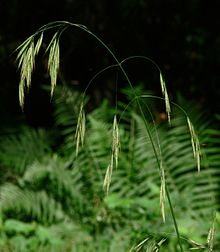
Bromus is a large genus of grasses, classified in its own tribe Bromeae. They are commonly known as bromes, brome grasses, cheat grasses or chess grasses. Estimates in the scientific literature of the number of species have ranged from 100 to 400, but plant taxonomists currently recognize around 160–170 species.

Brachypodium sylvaticum, commonly known as false-brome, slender false brome or wood false brome, is a perennial grass native to Europe, Asia and Africa. It has a broad native range stretching from North Africa to Eurasia.

Windsor Hill is a 61.8 hectare biological Site of Special Scientific Interest in Princes Risborough in Buckinghamshire. It lies within the Chilterns Area of Outstanding Natural Beauty, and it is featured in the Nature Conservation Review. A small part is managed by the Berkshire, Buckinghamshire and Oxfordshire Wildlife Trust, and access to this area requires a permit.

Bromus hordeaceus, the soft brome, is an annual or biennial species of grass in the true grass family (Poaceae). It is also known in North America as bull grass, soft cheat, and soft chess.
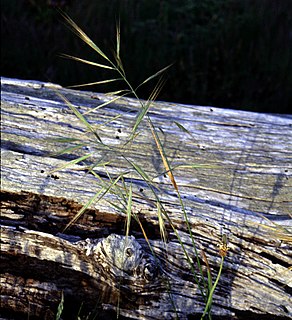
Bromus diandrus is a species of grass known by the common names great brome and "ripgut brome".

Bromus sterilis is an annual or biennial species of bromegrass known as barren brome, poverty brome, and sterile brome.

Bromus madritensis is a species of brome grass known by the common name compact brome. The specific epithet madritensis refers to Madrid, Spain. It has a diploid number of 28.
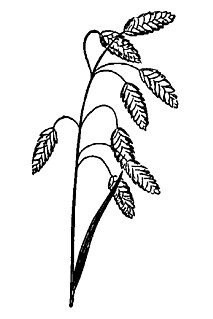
Bromus briziformis is a species of brome grass known by the common name rattlesnake brome. The specific epithet briziformis comes from the resemblance of the grass to grasses of the genus Briza, particularly Briza maxima. The common name is derived from the resemblance of the spikelets to the rattles of rattlesnakes. The grass has a diploid number of 14.
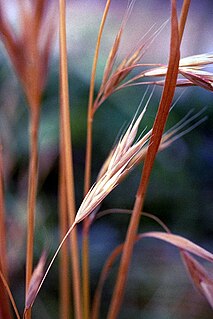
Bromus carinatus is a species of brome grass known by the common names California brome and mountain brome.

Bromus catharticus is a species of brome grass known by the common names rescuegrass, grazing brome, prairie grass, and Schrader's bromegrass. The specific epithet catharticus is Latin, meaning cathartic. The common name rescuegrass refers to the ability of the grass to provide forage after harsh droughts or severe winters. The grass has a diploid number of 42.

Bromus grandis is a species of brome grass known by the common name tall brome.
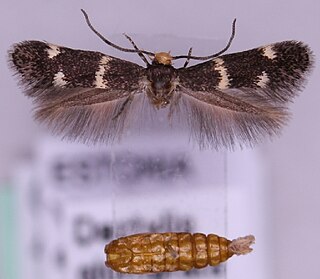
Elachista luticomella is a moth of the family Elachistidae. It is found in most of Europe.

Bromus maritimus is a species of brome grass known by the common names maritime brome and seaside brome. It is native to the coastal areas of California and Oregon.

Bromus kalmii, the Arctic brome or prairie brome, is a species of brome grass. It is a native bunchgrass in the North-central and Northeastern United States, the Great Lakes region, and eastern Canada. The specific epithet kalmii refers to its discoverer Pehr Kalm.

Bromus inermis is a species of the true grass family (Poaceae). This rhizomatous grass is native to Europe.

Bromus erectus, commonly known as erect brome, upright brome or meadow brome, is a dense, course, tufted perennial grass. It can grow to 120 centimetres (47 in). Like many brome grasses the plant is hairy. The specific epithet erectus is Latin, meaning "erect". The diploid number of the grass is 56.
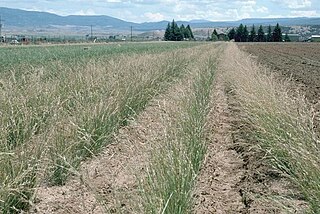
Bromus marginatus is a species of grass known by the common name mountain brome. It is native to western North America, and it is used widely for grazing animals and revegetating landscapes.

Bromus nottowayanus, the Nottoway Valley brome or satin brome, is a brome grass native to North America. The specific epithet nottowayanus refers to the Nottoway Valley. The grass has a diploid number of 14.

Bromus japonicus, the Japanese brome, is an annual brome grass native to Eurasia. The grass has a diploid number of 14.
